What are the emerging e-commerce trends to watch in 2024? As the digital marketplace prepares for another year of innovation, this article zeroes in on the key trends poised to drive the future of e-commerce. Discover the technologies and strategies that will equip you to confidently navigate the online commercial landscape – all without the usual jargon.
Contents
ToggleKey Takeaways
- AI-powered personalization uses machine learning to enhance the shopping experience, offering tailored product recommendations and dynamic pricing strategies based on customer data analysis to boost sales and loyalty.
- Mobile commerce is now a driving force for online shopping, emphasizing the need for responsive web design and seamless mobile payment options, further accelerated by advanced technologies such as PWAs.
- Integrating AR and VR technologies provides customers with immersive and interactive product visualizations, increasing engagement and confidence in online purchases and setting a new standard in e-commerce experiences.
AI-Powered Personalization
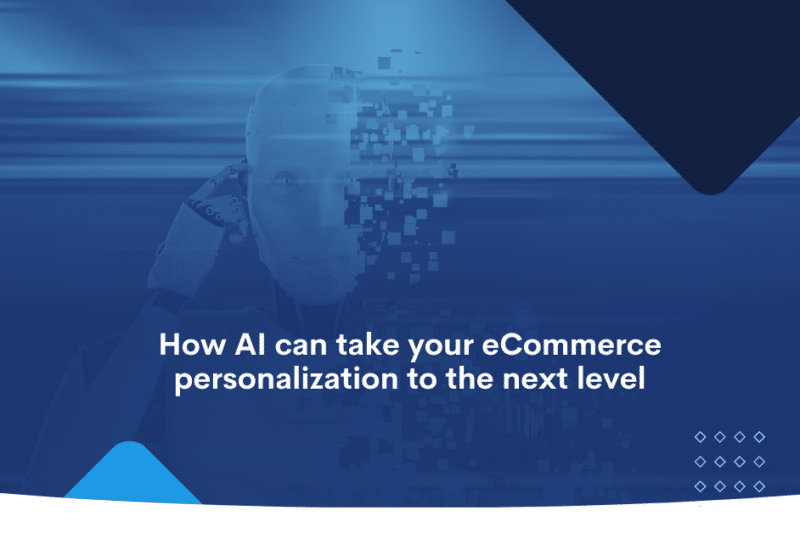
Envision an online store that anticipates customer needs even before they do. This isn’t mere fantasy – it’s made possible with AI-powered personalization. As one of the critical trends revolutionizing the e-commerce landscape, AI-powered personalization is about enhancing the customer experience by making it more personal and relevant. How does this work? Allow us to elaborate!
AI can analyze customer data through machine learning algorithms to provide tailored product recommendations and dynamic pricing strategies. This elevates the relevance of products showcased to customers and encourages them to purchase. As a result, it’s not surprising that many e-commerce businesses are embracing this trend to increase sales and brand loyalty.
Find out: 5 Ways To Increase Your Bottom Of The Funnel Conversions
Machine Learning for Product Recommendations
Here’s a fun fact: Did you know that machine learning can revolutionize product recommendations in e-commerce? Machine learning can improve online shopper satisfaction by analyzing transactions and forecasting customer behavior.
One shining example is Jones Road Beauty, which uses machine learning to create personalized product recommendations, showcasing a practical application of this trend for customized marketing campaigns in e-commerce.
Dynamic Pricing Strategies
Moreover, AI and machine learning have an influential role in shaping dynamic pricing strategies. Businesses can adjust prices dynamically by processing vast amounts of data to analyze customer behavior, market trends, and competitor pricing. This real-time analysis allows businesses to maximize revenue and profitability in response to changing market conditions.
Are you prepared to use this strategy to your advantage?
Mobile Commerce Dominance
As we continue to ride the wave of digital transformation, mobile commerce is one new e-commerce trend that’s making a splash. With the number of consumers shopping online through their mobile devices on the rise, it’s clear that the future of e-commerce lies in the palm of our hands. What’s fueling this trend, you ask? Let’s examine further.
Some reasons why mobile shopping is on the rise include:
- The convenience of shopping from anywhere at any time.
- Social media platforms like Instagram and TikTok offer seamless mobile shopping experiences.
- Technological advancements in mobile commerce, such as Progressive Web Apps (PWAs), provide an elevated shopping experience tailored to mobile users.
These factors have contributed to the growing popularity of mobile shopping among online shoppers, making it easier than ever to shop online.
Responsive Web Design
In the mobile-first world of e-commerce, having a responsive web design is no longer an option but a necessity. After all, what’s the point of having a stunning website if it doesn’t look or function well on mobile devices? Responsive web design ensures a smooth and effortless experience on any device, adapting the layout and content for easy access.
As a result, it significantly boosts user satisfaction and increases conversion rates.
Seahawk’s Expertise in Responsive WordPress Development & Design
Seahawk demonstrates profound expertise in custom WordPress development and design, emphasizing the creation of responsive and visually appealing websites that resonate with each client’s unique brand identity. Our approach is characterized by close collaboration with clients, ensuring a deep understanding of their needs and brand nuances.
Specializing in responsive design, our team ensures that websites are optimized for a seamless experience across all devices, from compact smartphones to expansive desktop screens. Beyond aesthetic appeal, we prioritize website performance and the ability to drive conversions, aligning each project with the latest web standards. This commitment to quality and detail in every aspect of WordPress website development positions us as a trusted partner for businesses seeking a website that is visually captivating, functionally robust, tailored to their brand, and optimized for a diverse range of devices.
Build A Website That Truly Reflects Your Brand
Say goodbye to cookie-cutter templates and hello to custom WordPress design with Seahawk.
Seamless Mobile Payments
Another critical aspect of mobile commerce is the seamless mobile payment experience. With features like one-click payments and digital wallets, customers can breeze through their purchases with just one click, eliminating the hassle of entering payment details repeatedly. This makes the payment process a breeze and saves valuable time for busy consumers on their mobile devices, leading to increased impulse purchases and overall sales.
Explore: Basic Principles Of Website Design That Drives Sales
Augmented Reality (AR) and Virtual Reality (VR) Integration
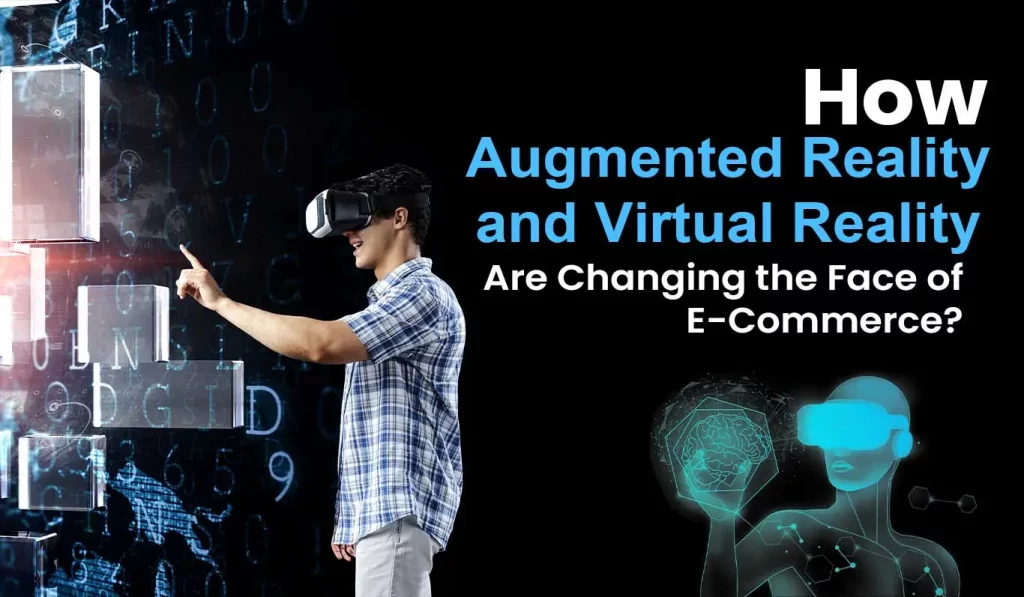
From mobile devices, let’s now shift our focus to another exciting development in the e-commerce world: The integration of Augmented Reality (AR) and Virtual Reality (VR). These technologies are revolutionizing e-commerce platforms, offering immersive product visualization and interactive shopping experiences that closely mimic a physical store setting. Are you curious about how AR and VR are transforming e-commerce? Let’s investigate.
AR technology offers the following benefits:
- Overlays brand or product content with the buyer’s world
- Allows customers to engage with the product wherever they are
- Elevates the relevance of products showcased to customers
- Encourages customers to make a purchase.
On the other hand, VR technology offers personalized shopping experiences and builds stronger brand recall through the immersive nature of VR. Integrating visual content like AR and VR caters to the needs of around 91% of Gen Z shoppers who actively seek visual content before making purchases.
AR in Product Visualization
When it comes to product visualization, AR technology is a game-changer. By overlaying digital information onto the physical world, AR allows customers to:
- Visualize how a product would look in their environment
- Try before they buy
- Reduce returns
- Increase customer confidence
A great example of a company using AR for product visualization is IKEA. The Place mobile app utilizes Apple’s ARKit platform for customers to visualize digitally reproduced 3D product images in their homes. This feature enhances the shopping experience by providing a more immersive and interactive way to view products.
Read: Customize WooCommerce Templates & Product Pages
VR Shopping Experiences
On the other hand, VR offers an immersive and interactive way for customers to explore products, providing a shopping experience that closely mimics a visit to a physical store. This immersive interaction fosters a profound understanding of the product and its utility, empowering customers to make well-informed purchasing choices, ultimately driving up customer satisfaction and reducing return rates.
As VR technology advances, it may become a standard part of the shopping journey, further blurring the lines between physical and digital retail spaces.
Social Commerce Expansion
From VR and AR, let’s turn to a trend closer to our daily lives: Social Commerce. With the rise of social media platforms and their integration with e-commerce functionalities, we’re witnessing an exciting expansion of social commerce. Shoppable posts, ads, and influencer collaborations drive sales and brand awareness on platforms like Instagram and TikTok. Wondering how these features are reshaping e-commerce? Let’s delve into that.
Shoppable posts and ads on social media platforms enable customers to purchase directly from the platform, thus streamlining the buying process. Meanwhile, influencer collaborations drive sales by leveraging their trust and influence with their audience. These endorsements ignite discussions among followers, promote sharing of experiences and opinions, and create user-generated content, all of which build credibility and drive sales for the brand.
Shoppable Posts and Ads
Shoppable posts and ads on social media platforms are designed to make it easy for consumers to click through and make a purchase with product tags. They eliminate the need for consumers to leave the social media platform and visit the e-commerce website, thus streamlining the shopping journey and ultimately boosting conversion rates.
Know: Ecommerce World-class Shopping & UI Design Experience
Influencer Collaborations
Influencer collaborations are incredibly effective at driving greater customer engagement and outperforming traditional branded posts. Studies show that, on average, influencer marketing brings in $5.78 for every dollar spent. As influencer recommendations influence 80% of consumers, it’s clear that they play a vital role in attracting new customers through organic traffic.
Need Help Building An E-commerce Online Store?
With WooCommerce, we can easily build a successful e-commerce store for you. Don’t miss out on this lucrative opportunity!
Green Commerce and Sustainability
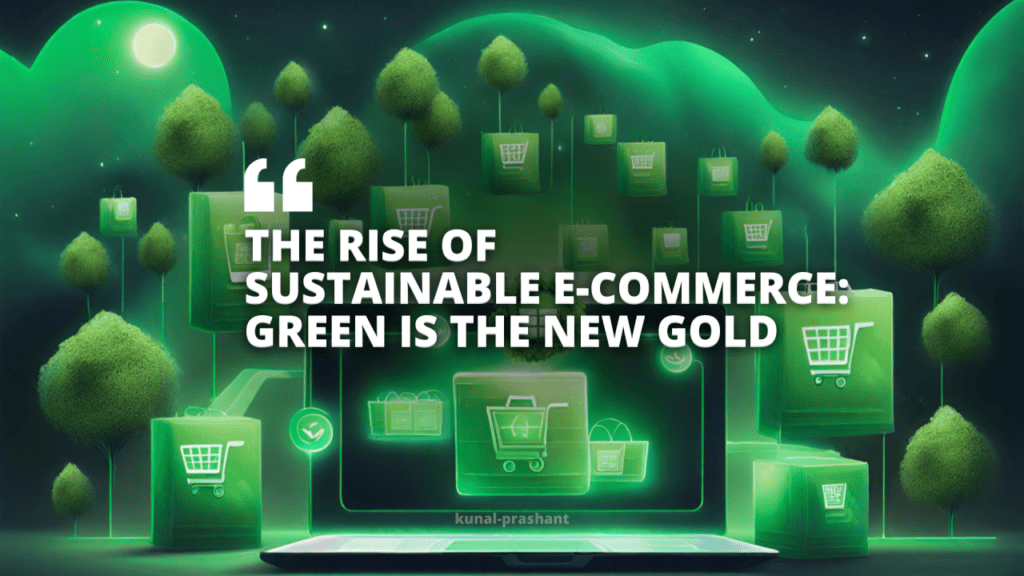
As we continue to navigate the e-commerce landscape, one e-commerce trend that cannot be ignored is the rise of green commerce and sustainability in the e-commerce industry. With consumers becoming more conscious of their shopping habits, e-commerce businesses increasingly focus on environmentally friendly practices. In this context, an e-commerce business must adapt to meet these new demands. What does this entail in real-world terms? Let’s uncover the practical implications.
Environmentally friendly packaging options, such as using biodegradable materials and reducing excess packaging, appeal to eco-conscious consumers and minimize environmental impact. At the same time, ethical sourcing practices demonstrate a brand’s commitment to social and ecological responsibility, attracting conscious consumers and elevating their brand reputation.
Explore: Critical SEO Trends To Follow In 2024
Environmentally Friendly Packaging
Environmentally friendly packaging options are making a significant impact on green commerce. By using biodegradable and recyclable materials, businesses are not only reducing their carbon footprint but also appealing to eco-conscious consumers.
Companies like Plaine, Lush, and ASOS are leading the way in using environmentally friendly packaging, showing how this practice can contribute to a brand’s sustainability goals and customer appeal.
Ethical Sourcing and Manufacturing
Ethical sourcing and manufacturing practices play a crucial role in green commerce. By ensuring that products are obtained through responsible and sustainable methods, businesses can demonstrate their commitment to social and environmental responsibility. This enhances their brand reputation and appeals to conscious consumers who value ethical practices.
Find out: What Is Branding? Learn About The Components Of Branding
Voice Search Optimization

As technology evolves, voice search is emerging as a critical trend in e-commerce. With the rising popularity of voice-activated assistants like Amazon Alexa and Google Assistant, optimizing for voice search is becoming necessary for businesses. How can companies harness this trend to enhance their visibility? Let’s investigate further.
Voice search optimization involves:
- Adjusting your SEO strategy to accommodate the conversational and question-based queries typically used in voice search
- Targeting long-tail, question-based keywords
- Aligning your content with natural, conversational language
By implementing these strategies, businesses can improve their chances of appearing in voice search results.
Keyword Strategies
In voice search optimization, keyword strategies play a crucial role. By targeting questions and long-tail keywords, businesses can improve their search engine rankings and increase their visibility. Additionally, companies can use powerful keyword tools like Answer the Public, Google Keyword Planner, and Wordstream to identify relevant keywords and optimize their content accordingly.
Voice-Activated Assistants
Voice-activated assistants, such as Amazon Alexa and Google Assistant, are becoming increasingly popular tools for online shopping. By interpreting voice commands and swiftly carrying out the requested tasks, these assistants provide a seamless and convenient shopping experience. As a result, optimizing for voice search has become essential for e-commerce businesses.
Omnichannel Retailing
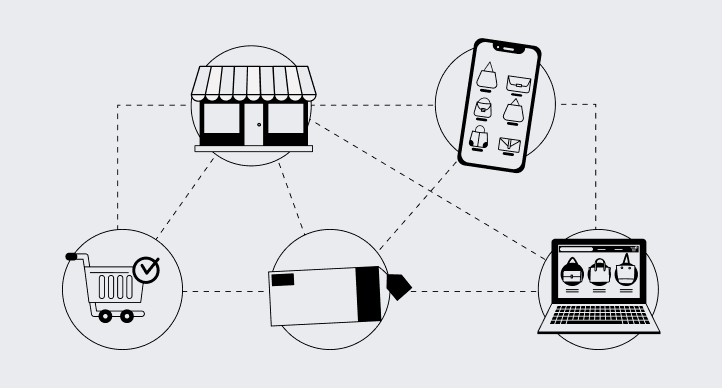
In today’s fast-paced e-commerce landscape, consumers expect a seamless shopping experience across all channels. This is where omnichannel retailing comes in. By providing a unified shopping experience across online and offline channels, omnichannel retailing meets customer expectations and enhances their overall shopping experience. What implications does this have for businesses? Let’s examine this in more detail.
Omnichannel retailing involves integrating different shopping channels to provide a seamless, unified customer experience. Whether a customer is shopping online from a mobile device, laptop, or brick-and-mortar store, the experience should be consistent and complementary. But that’s not all. Efficient inventory management and fulfillment strategies are crucial in ensuring timely delivery and availability of products, enhancing the overall shopping experience.
Unified Customer Experience
A unified customer experience in omnichannel retailing ensures that every interaction is consistent and seamless across different touchpoints and channels, optimizing the customer journey. This not only enhances the customer experience but also:
- improves brand perception
- boosts conversion rates
- expands customer data resources
- improves internal collaboration
- ultimately leads to enhanced crisis management
- provides a solid competitive advantage.
Inventory Management and Fulfillment
Efficient inventory management is crucial in omnichannel retailing, including e-commerce store operations. It ensures that the right products are in the right place at the right time, enhancing the customer experience.
In addition, efficient fulfillment strategies ensure timely delivery of products, further enhancing customer satisfaction and loyalty.
Subscription-Based Business Models
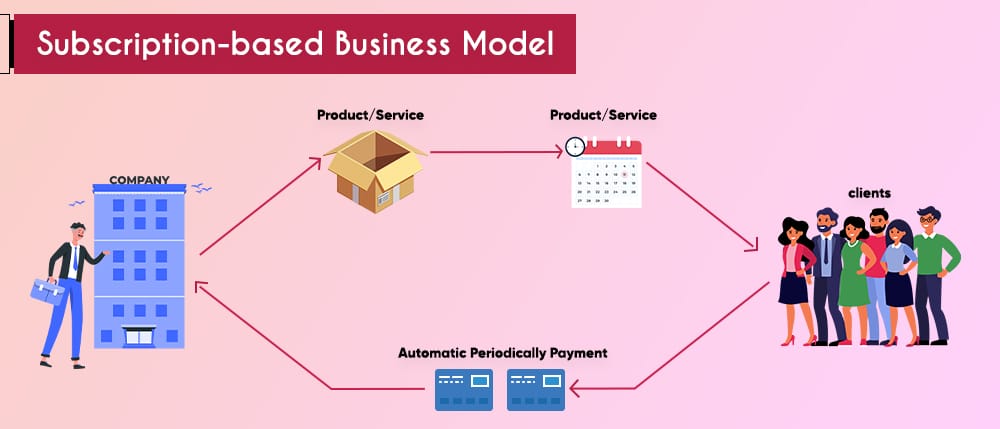
As we continue to explore the top e-commerce trends, let’s turn our attention to subscription-based business models. These models are gaining popularity in e-commerce, offering a steady stream of recurring revenue and opportunities for customer retention. How do these models function, and what advantages do they provide for businesses? Let’s uncover the facts.
Subscription-based business models involve selling a product or service regularly, typically monthly or annually. Customers pay a recurring fee to access the product or service, providing a steady revenue stream for the business. Additionally, these models offer opportunities for customer retention, as companies can offer special perks and incentives to keep subscribers engaged.
Recurring Revenue
The beauty of subscription models lies in their ability to:
- Generate recurring revenue
- Build strong customer relationships
- Provide products or services regularly
- Ensure a steady and predictable stream of revenue
- Offer features like automatic renewals and upselling opportunities
All of these factors contribute to the stability of these revenue streams.
Indeed, businesses like Netflix and Spotify have thrived using this model, proving that subscription models can be a powerful tool for growth and success.
Customer Retention Strategies
In subscription-based business models, customer retention is critical. By implementing effective customer retention strategies, businesses can increase the lifetime value of their customers and reduce churn. Some strategies to consider include:
- Offering special perks to loyal customers
- Maintaining open lines of communication with customers through newsletters or personalized emails
- Personalizing the customer experience by tailoring recommendations or offers based on their preferences
By implementing these strategies, businesses can improve customer retention and drive growth.
Businesses can build long-term customer relationships and ensure sustainable growth by focusing on customer retention.
Data Privacy and Security Concerns
In today’s digital age, data privacy and security are paramount. With increasing concerns about data breaches and privacy violations, businesses must take necessary measures to protect customer data and ensure secure transactions. From complying with GDPR to implementing secure payment processing methods, companies are responsible for building customer trust by prioritizing data privacy and security. Let’s investigate these crucial aspects further.
GDPR compliance protects customer data and demonstrates a commitment to privacy, building consumer trust. On the other hand, secure payment processing methods, such as SSL encryption and tokenization, protect customer information and reduce the risk of fraud. Businesses can mitigate risks and enhance customer trust and loyalty by ensuring data privacy and security.
Read: Best WordPress Security Service Providers Of 2024
GDPR Compliance
Ensuring GDPR compliance is crucial for businesses trading with European citizens. Companies can showcase their dedication to customer privacy, build trust, and meet essential regulatory requirements.
Furthermore, GDPR compliance helps businesses avoid severe penalties and fines, making it an essential aspect of data privacy and security.
Secure Payment Processing
Secure payment processing is another crucial aspect of data privacy and security in e-commerce. Businesses can protect sensitive customer information during transactions by implementing secure payment processing methods like SSL encryption and tokenization. Additionally, these methods help minimize the risk of fraud, enhancing customer confidence and trust in the business.
Global E-commerce Market Expansion
As we explore the top e-commerce trends, let’s turn our attention to the global expansion of the e-commerce market. With more and more businesses venturing into international markets, the potential for cross-border sales is immense. How can companies leverage this potential, and what tactics can they employ to meet the varied needs of customers? Let’s delve into this.
Cross-border e-commerce sales enable e-commerce businesses to reach new markets and increase revenue through their e-commerce site. However, to ensure a seamless shopping experience for international customers, companies must implement localization strategies for their e-commerce stores. These strategies can include language translation, currency conversion, and adapting sales plans and UX strategies to support native languages. By doing so, businesses can ensure that their products and services resonate with local customers, boosting global sales.
Know: How To Speed Up Your eCommerce Website?
Cross-Border Sales
Cross-border sales open the door to untapped markets, expanding your market reach and unleashing the potential for massive sales growth. However, to tap into these opportunities, businesses must strategically choose their target markets, localize their website, and employ a tactical business approach. This ensures success in the global e-commerce market and allows firms to cater to the diverse needs of international customers.
Localization Strategies
Localization strategies are crucial in catering to diverse customer needs in the global e-commerce market. Some key strategies include:
- Language translation ensures that customers can navigate and understand the website in their native language.
- Offering currency conversion to allow customers to view and purchase products in their local currency.
- Analyzing target markets, adapting sales plans and UX strategies to support native languages, building trust with local customers, and creating a seamless user experience.
By implementing these strategies, businesses can ensure a seamless shopping experience for international customers and increase their chances of success in the global market.
Wrap Up: E-commerce Trends 2024
As we wrap up our journey through the top e-commerce trends of 2024, it’s clear that the e-commerce landscape is more dynamic and exciting than ever. From AI-powered personalization to green commerce and voice search optimization to global market expansion, these trends are shaping the future of e-commerce and redefining how consumers shop. As we navigate this exciting landscape, remember that staying ahead of these e-commerce trends is vital to success. So, are you ready to embrace these e-commerce trends and transform your e-commerce business?
Frequently Asked Questions
What is the prediction for e-commerce in 2024?
In 2024, marketers will leverage AI to enhance e-commerce and offer more ways for shoppers to discover and purchase. Get ready for a more robust and connected online shopping experience!
What are the next generation e-commerce trends?
AI will shape the next generation of eCommerce by providing personalized shopping experiences and more engaging customer service through chatbots. Livestream shopping will also continue to take over social commerce, combining the power of social media, video streaming, and e-commerce.
What will e-commerce look like in 2030?
In 2030, e-commerce will be highly personalized and driven by AI and machine learning. By the mid-2030s, brain-computer interfaces could revolutionize our interactions with AI assistants. Embrace the exciting advancements ahead!
What is AI-powered personalization in e-commerce?
AI-powered personalization in e-commerce uses machine learning to analyze customer data and offer personalized product recommendations and dynamic pricing. This helps businesses improve customer experience and increase sales.
How is mobile commerce dominating the e-commerce landscape?
Mobile commerce is dominating the e-commerce landscape because of the convenience for customers, increased social media mobile traffic, and technological advancements like Progressive Web Apps (PWAs). Embrace mobile commerce to stay relevant and meet your customers’ needs.




















